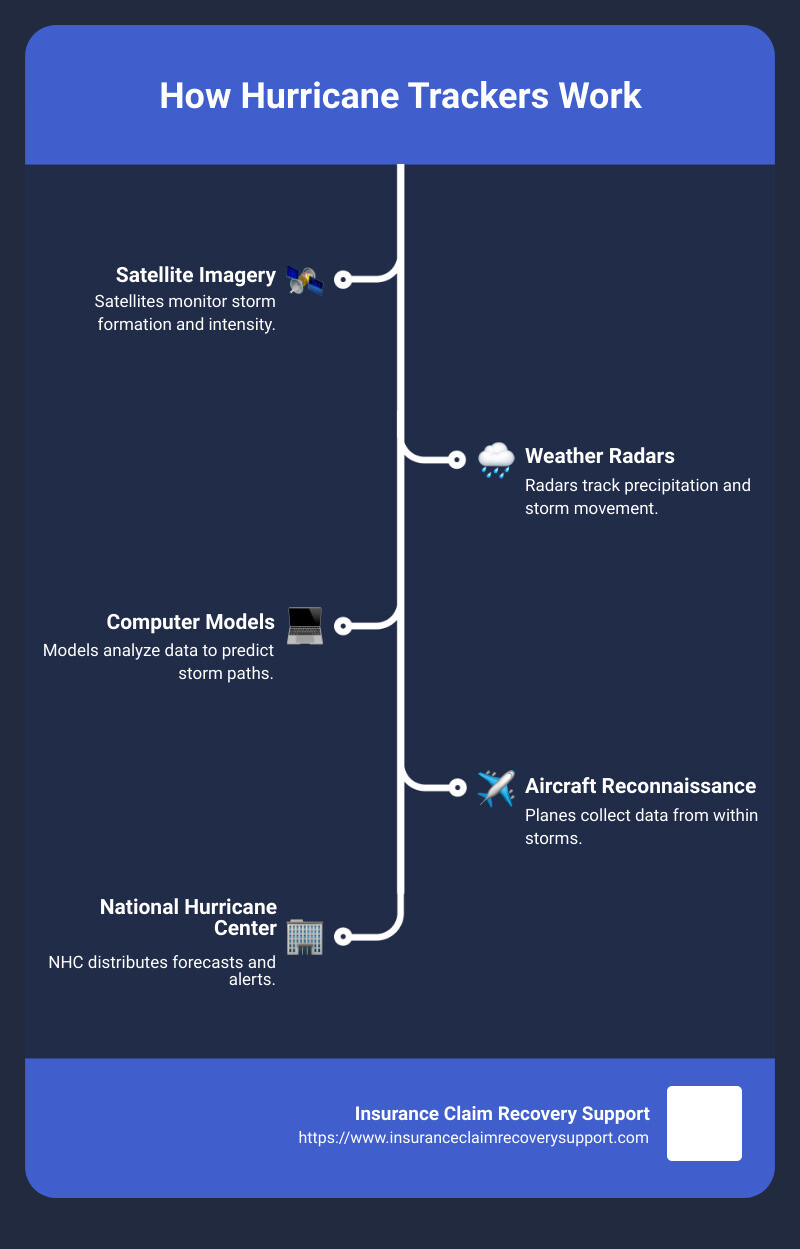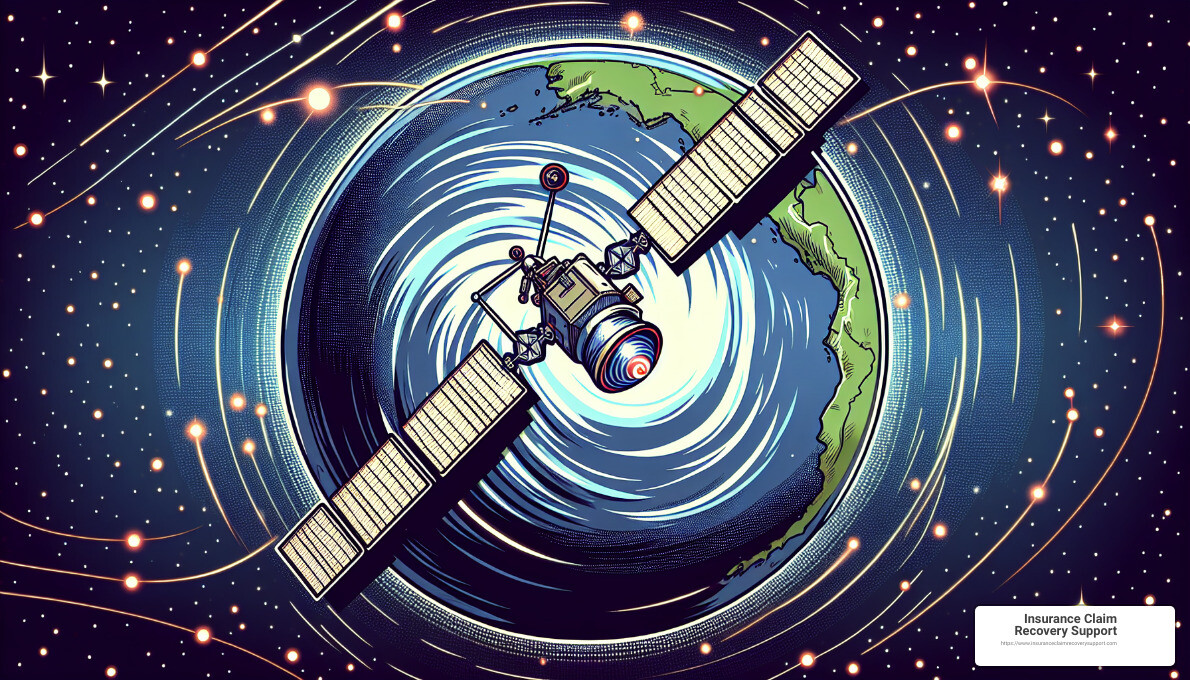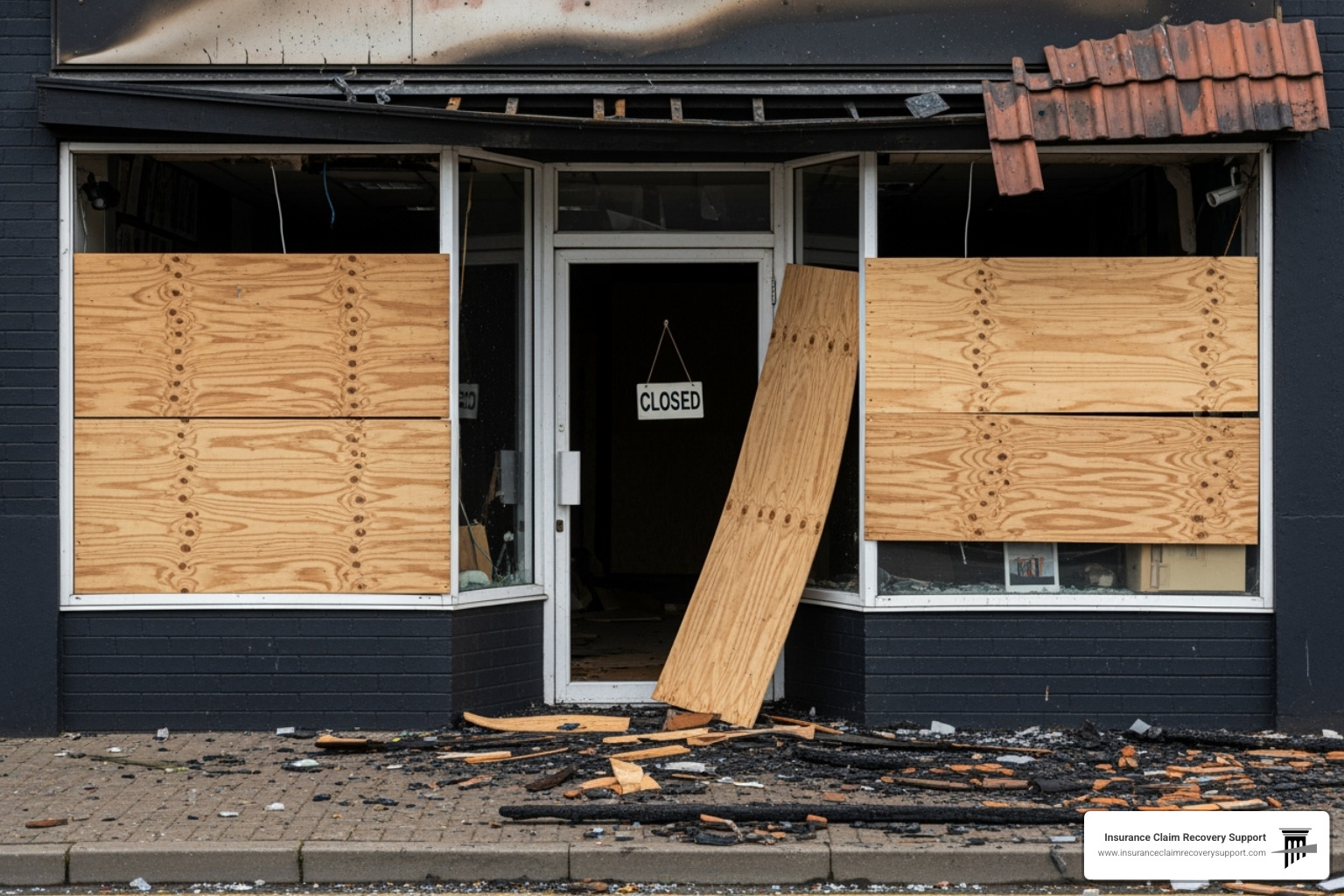Introduction
When the Atlantic hurricane season kicks off each year, staying informed becomes essential. Hurricane trackers are tools that help you monitor developing storms and predict their paths. Here’s a quick rundown of how you can use these tools:
- Stay Updated: Use reliable sources like the NOAA National Hurricane Center for current information.
- Interactive Maps: Utilize online maps to see real-time storm paths and projected tracks.
- Alerts and Notifications: Sign up for weather alerts to receive timely warnings.
Tracking hurricanes efficiently helps you stay prepared and safeguard your property and loved ones.
Living in hurricane-prone areas requires vigilance and preparation. The stakes are high, and understanding how hurricanes are tracked can make all the difference. The importance of using hurricane trackers cannot be overstated—they provide vital data to help you prepare, react, and protect your assets.
Hurricane trackers gather information from various sources, including satellite imagery and weather radars. The data is then analyzed to forecast the storm’s path, intensity, and potential impact. By staying informed, you can take timely actions such as securing your property and planning evacuation routes.

Understanding Hurricane Trackers
Hurricane trackers gather information from various sources, including satellite imagery and weather radars. The data is then analyzed to forecast the storm’s path, intensity, and potential impact. By staying informed, you can take timely actions such as securing your property and planning evacuation routes.
NOAA and NHC
The National Oceanic and Atmospheric Administration (NOAA) and the National Hurricane Center (NHC) are two of the primary organizations responsible for hurricane tracking. NOAA offers a wide array of information, including satellite imagery and sea conditions. The NHC focuses on predicting the paths and impacts of tropical storms and hurricanes. According to a recent update, NOAA predicts an above-normal 2024 Atlantic hurricane season, highlighting the importance of staying informed through these resources.
Satellite Imagery
Satellite imagery is a crucial tool in hurricane tracking. Satellites capture real-time images of weather systems, allowing meteorologists to observe the formation and movement of hurricanes. These images help in identifying key features such as the eye, eyewall, and rain bands of the storm. Satellite data is essential for creating accurate forecasts and providing early warnings.

Computer Models
Computer models are used to predict the future path and intensity of hurricanes. These models use complex mathematical equations to simulate the atmosphere and oceans. The variables include temperature, wind speed, and pressure. The models run on supercomputers and provide forecasts that are updated regularly. While not always perfect, these models are invaluable for giving a general idea of where a hurricane might go and how strong it might become.
Aircraft Reconnaissance
Aircraft reconnaissance involves flying specially equipped planes into hurricanes to collect data. These planes, often called “Hurricane Hunters,” measure wind speeds, pressure, temperature, and humidity inside the storm. This data is then fed into computer models to improve the accuracy of forecasts. The information gathered by Hurricane Hunters is critical for understanding the structure and strength of hurricanes.
By leveraging these advanced tools and resources, hurricane trackers provide vital information that can help you prepare and protect your property.
Next, let’s explore the best tools and sites for tracking hurricanes effectively.
Best Hurricane Tracker Tools and Sites
When it comes to tracking hurricanes, having the right tools and sites at your disposal can make all the difference. Here are some of the best resources to help you stay informed and prepared.
NOAA National Hurricane Center
The National Hurricane Center (NHC) is a go-to source for reliable and up-to-date information on hurricanes. They provide detailed forecasts, storm tracks, and updates on current storm activity. You can access their resources here.
Live Hurricane Tracker
A live hurricane tracker allows you to see real-time data on active storms. These trackers often include interactive maps, satellite imagery, and storm path predictions. One popular option is the Weather Channel app, which provides local radar information and storm movement tracking.
Interactive Map
Interactive maps are incredibly useful for visualizing the path and potential impact of hurricanes. The NHC offers an interactive hurricane map that lets you see the paths of previous hurricanes and current storm activity. This tool allows you to zoom in on specific areas and get detailed information about each storm.
Satellite Imagery
Satellite imagery is crucial for monitoring hurricanes. It provides a bird’s-eye view of storm development and movement. NOAA offers comprehensive satellite imagery that you can access through their website. This imagery helps you see the storm’s structure and intensity in real-time.
National Hurricane Center Data
The NHC provides a wealth of data that can help you understand and track hurricanes. This includes wind speed probabilities, storm surge predictions, and detailed storm advisories. By regularly checking the NHC’s data and updates, you can stay informed about the latest developments and potential threats.
By using these tools and resources, you can effectively monitor hurricanes and take the necessary steps to protect yourself and your property.
Next, let’s look at how to use hurricane trackers effectively.
How to Use Hurricane Trackers Effectively
Using a hurricane tracker can help you stay safe and prepared. Here’s how to make the most of these tools:
Tracking Charts
Tracking charts are maps that show the path of a hurricane. They use a mix of lines and symbols to represent the storm’s progress.
- Solid lines: Indicate the hurricane’s path.
- Dotted lines: Show the track of a tropical depression.
- Dashed lines: Represent tropical storms.
These charts help you see where the hurricane has been and where it might go next. The National Hurricane Center (NHC) updates these charts regularly.
Predicted Storm Tracks
Predicted storm tracks show where the hurricane is likely to move in the next few days. This information comes from computer models that analyze weather data.
- Cone of Uncertainty: This is a key feature on many maps. It shows the possible path of the storm but gets wider over time, indicating increased uncertainty.
- Spaghetti Models: These are multiple lines that show different possible tracks from various models. They look like spaghetti noodles on the map.
These tools help you understand the potential direction and impact of the hurricane.
Wind Speed Probabilities
Wind speed probabilities show the chances of different wind speeds in various areas. The NHC provides this data to help you gauge the risk of strong winds.
- Color-Coded Maps: Different colors represent the likelihood of experiencing certain wind speeds.
- Tables and Graphs: These can also show wind speed probabilities over time.
Knowing the wind speed probabilities can help you decide if you need to reinforce your home or evacuate.
Satellite Overlay
Satellite overlay adds real-time images of the hurricane to the map. This gives you a visual of the storm’s size and structure.
- Infrared Images: Show the temperature of the storm’s clouds, helping to identify the strongest parts.
- Visible Images: Provide a clearer view of the storm during daylight hours.
Satellite overlays give you a detailed look at the hurricane, making it easier to understand its intensity.
Radar
Radar provides real-time data on rain, wind, and storm movement. It’s especially useful for seeing the immediate effects of a hurricane.
- Doppler Radar: Measures the speed and direction of rain and wind.
- Composite Radar: Combines data from multiple radar sites for a more comprehensive view.
Using radar helps you track the hurricane’s progress and prepare for its arrival.
By mastering these tools, you can use a hurricane tracker to stay informed and make smart decisions.
Next, let’s explore how to prepare for a hurricane effectively.
Preparing for a Hurricane
Emergency Kit
A well-prepared emergency kit can be a lifesaver. Here are the essential items you should include:
- Water and Non-perishable Food: At least a three-day supply per person.
- NOAA Weather Radio: With battery backup to receive emergency alerts.
- First-Aid Kit: Include essential medicines and supplies.
- Flashlights and Batteries: Power outages are common during hurricanes.
- Important Documents: Keep copies in a waterproof container.
- Personal Hygiene Items: Soap, hand sanitizer, and sanitary products.
- Extra Clothing and Blankets: To stay warm and dry.
- Tools and Supplies: Basic tools, duct tape, and a whistle to signal for help.
- Pet Supplies: Food, water, and medications for your pets.
Evacuation Plans
Knowing when and how to evacuate is critical. Follow these steps to ensure your family is prepared:
- Identify Evacuation Zones: Determine if your home is in a storm surge evacuation zone. Check your zone.
- Plan Routes: Identify multiple evacuation routes in case some roads are blocked or flooded.
- Shelter Information: Know the location of nearby shelters and have a plan for where you will stay.
- Communication Plan: Establish how you will contact family members if separated. Make sure everyone knows the plan.
- Practice Drills: Regularly practice your evacuation plan to make the actual evacuation smoother and less stressful.
Insurance Coverage
Navigating insurance claims can be overwhelming, but preparation helps. Here’s what to keep in mind:
- Public Insurance Adjuster: Consider hiring a public insurance adjuster to help you navigate the claims process. They advocate on your behalf to ensure you receive the compensation you deserve.
- Insurance Claim Recovery Support: This service can be invaluable in helping you recover from the hurricane’s impact. They specialize in maximizing settlements for policyholders.
- Document Everything: Take photos and videos of your property before and after the storm to provide clear evidence of damage.
- Review Your Policy: Make sure you understand what your insurance covers and any exclusions that may apply.
Property Protection
Taking steps to secure your home can minimize damage. Here’s how to protect your property:
- Wind Damage Mitigation: Reinforce roofs, windows, and doors. Install storm shutters or board up windows.
- Flood Insurance: Consider insuring your home or business against flood loss. Standard homeowners insurance does not cover flood damage.
- Securing Property: Remove or secure loose items from your yard that could become projectiles in high winds.
- Elevate Utilities: If possible, elevate utilities like air conditioning units and electrical systems to reduce flood risk.
Local NWS Briefing
Staying informed with local updates is crucial:
- National Weather Service (NWS): Regularly check updates from the NWS for the latest information on storm paths and safety recommendations.
- Local News Apps: Download apps from local TV stations for real-time updates, evacuation orders, and shelter openings.
- Community Alerts: Sign up for community alert systems to receive emergency notifications directly to your phone.
By following these preparation strategies, you can enhance your readiness for hurricanes and safeguard your property and loved ones.
Frequently Asked Questions about Hurricane Tracking
Are there any hurricanes being tracked right now?
As of the latest update, there is one active storm in the region, but it is not currently threatening any land. It’s always smart to stay updated through reliable sources like the National Hurricane Center (NHC). The NHC provides real-time data, including storm paths and potential impact areas.
Is a hurricane coming to South Carolina?
At present, there are no active hurricanes predicted to hit South Carolina. However, the hurricane season runs from June 1 to November 30, so remain vigilant. The NHC’s live hurricane tracker is an excellent tool for monitoring potential storms. Always follow local advisories to stay safe.
What was the worst hurricane in history?
One of the most devastating hurricanes in recent history was Hurricane Ian, which struck Florida on September 28, 2022. Making landfall near Cayo Costa as a Category 4 storm, it brought winds up to 155 mph. The storm caused catastrophic damage, including severe flooding and widespread power outages. The recovery efforts continue to this day, highlighting the importance of preparedness and timely information.
For more detailed tracking and updates, consider using tools like the NHC’s interactive maps and satellite imagery. These resources can help you stay informed and prepared during the hurricane season.
Conclusion
Navigating the aftermath of a hurricane can be challenging, especially when it comes to dealing with property damage and insurance claims. At Insurance Claim Recovery Support, we specialize in maximizing settlements and leveraging our expertise to support homeowners and businesses affected by storm damage.
Maximizing Settlements: Our team of experienced public adjusters excels in negotiating with insurance companies to ensure you receive the compensation you rightfully deserve. We understand the nuances of insurance policies and use our expertise to challenge underpayments and denials effectively.
Property Damage Claims: We bring a deep understanding of the types of damages that hurricanes can cause. Our assessors are skilled in identifying all levels of damage, ensuring that nothing is overlooked during the insurance claim process.
Staying Informed with Fire and Storm Damage News: We keep our clients and the community informed with the latest updates and preventive measures regarding fire and storm incidents across Texas. Staying informed helps in preparing for and mitigating the effects of future disasters.
Navigating the Insurance Claim Process: Our team guides you through every step of the insurance claim process. From initial damage assessment to filing claims and negotiating settlements, we ensure transparency and communication, making the process as smooth as possible for you.
In conclusion, while recovering from hurricane-related damages can be daunting, you don’t have to face it alone. With Insurance Claim Recovery Support by your side, you can navigate the insurance claim process with confidence. Let us help you rebuild, restore, and return to normalcy with the financial compensation you rightfully deserve. Together, we can turn a devastating situation into a manageable recovery process.
For more information on how we can assist you, visit our Hurricane Damage Recovery page.





